The other day I saw a lamp made from an interestingly shaped twig, covered liberally with glossy varnish, posted on a group of woodworking enthusiasts. The author asked the other members of the group for their opinion of his creation, and the comments varied and were divided, with some considering the object a success, others a total failure. Far be it from me to determine what is beautiful and what is not. The term is so relative, everyone has their own "beautiful" based on different criteria and perceptions, that it is difficult to say, generally speaking, that one object is beautiful and another ugly. Regardless of the beauty and ugliness of each, there are unwritten rules, correlations between styles and finishes that should be respected for the coherence of the idea conveyed. In the above case, an object that is meant to be natural - a branch that retains its natural shape - cannot be covered with a thick coat of gloss varnish. The resulting object completely loses its natural appearance, and the original intention is compromised.
The most abused of all styles is the rustic. We have already written an article about it and you will find here recommendations for finishing furniture reminiscent of the village world. But it is not only the imagination of those who make wooden objects and furniture that is affected. Choosing the wrong finish, poor quality or using questionable materials to make the furniture will result in an unpleasant appearance, even if the wood used or the processing methods used were of the best.
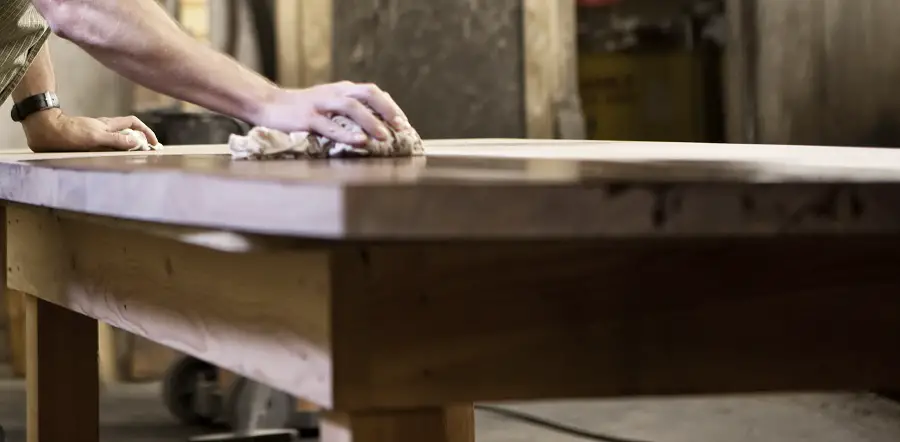
Don't spoil the wood and the look of your work with the wrong materials!
This is not the first time I have talked about how the value of furniture can be enhanced or, on the contrary, diminished by finishing. Over the years, I have seen craftsmen with a talent for woodworking, a talent that disappeared when they had to apply protection to the object. It is very hard for me to understand how craftsmen who choose their tools very carefully, who talk about the differences in fineness between brands, choose any varnish, apply it with the wrong brush and think that a thick, glossy coat of varnish solves the problem of the finish.
If you spend weeks talking to all sorts of specialists when you buy a machine or a tool, do the same when it comes to finishing materials. Social networking groups are not a good place for that. There are some very good craftsmen, but there are also many who are not very good and have no qualms about giving advice in a very determined tone. If you ask for advice and are unlucky enough to be answered by only the least skilled, you will be left with the wrong idea of how to solve the problem.
It is best to call in the specialists, as you do with machinery. Talk to representatives of companies that sell professional wood varnishes and paints. The products in DIY stores are mostly for people painting a chair or fence at home. Ask for as much information and advice as you can, ask what can happen if you use one material or another, what is the best option, find out what is possible. I assure you that you can learn a lot of interesting information and finishing techniques from a well-trained technician.
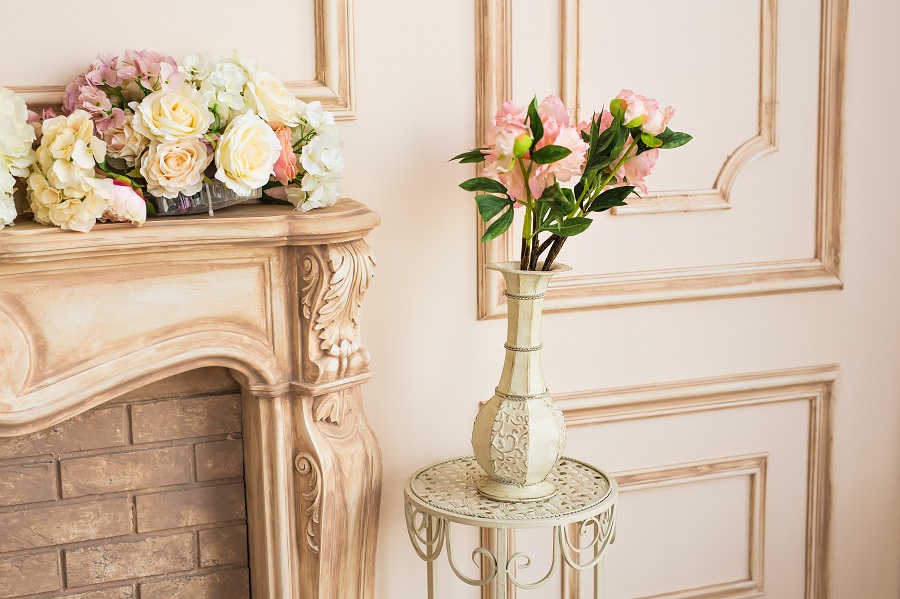
Don't abuse the gloss!
There are styles of furniture or objects that look good if the applied lacquer is very glossy. But gloss doesn't go with every kind of furniture. Styles rustic, rustic industrial, shabby chic, farmhouse, Scandinavian do not have gloss among their characteristics. If the design suggests one of these styles, the finish must be made to match it for the furniture to achieve its purpose.
Mirror light is one of the most difficult finishes, both in terms of maintenance and for the person who wants to achieve it. I often hear "the customer wanted it that way". But the customer can be helped to understand the pros and cons of finishes. Furniture buyers know very little about wood, derived panels or types of finish. Perhaps if it were explained to them what it means to maintain a very glossy piece of furniture, how every fingerprint and every speck of dust or very fine scratch shows through, they might not be so determined.
And gloss doesn't necessarily mean mirror gloss. A gloss level Over 60-70 is already glossy enough for most customers and much easier to achieve and maintain. It will even be more than satisfactory for those who think that if it's not shiny, it's not varnished. Even at gloss level 40, the lacquer has a pleasant sheen, even if it does not perfectly reflect the surrounding images. The gloss grades between 40 and 60 are very pleasant, giving the furniture a silky look.
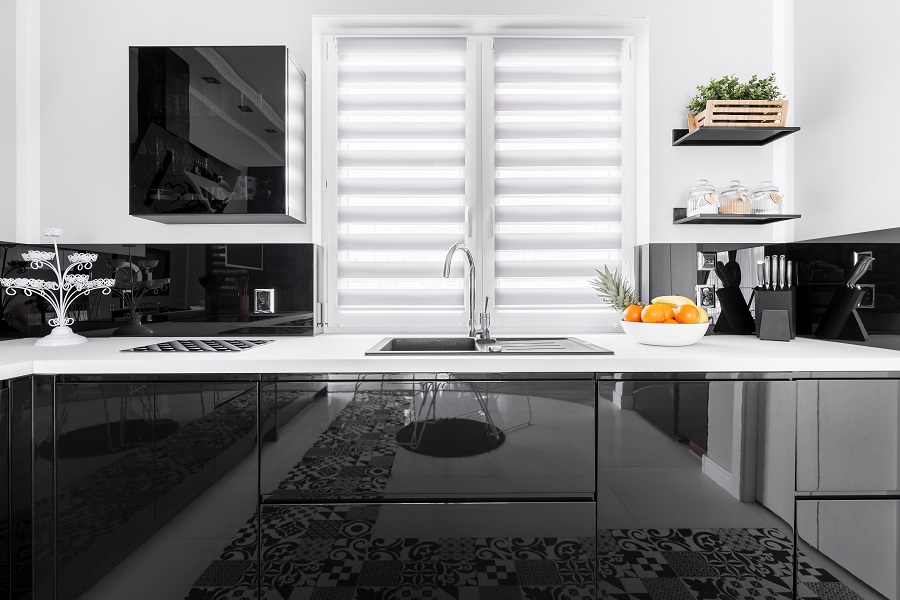
Burning wood staining is not suitable for all furniture
Another abused custom is coloring wood by torching. It cannot be done at any time and on any kind of furniture. To make it look nice, the wood is first burned and then brushed. If left unbrushed, the burned wood will look uneven and stained. It may look good on a small piece of wood, but on a cabinet the whole wall will look busy and tired. If you continue burning for evenness, a layer of charcoal will form on top which will protect the used wood very well on the outside, but on the inside the look will be appreciated only by enthusiasts of the Japanese method shou sugi ban.
If the wood is brushed after firing, the result is a veiled, embossed look, very suitable for rustic styles. Not all furniture can be made with burned wood. Classic, elegant styles do not go well with this coloration. In this case, a wood of nuc, oak, frasin, ulm, cherry, mahon, uncolored or in a color that highlights its natural grain and pattern and coated with semi-gloss or gloss varnish.
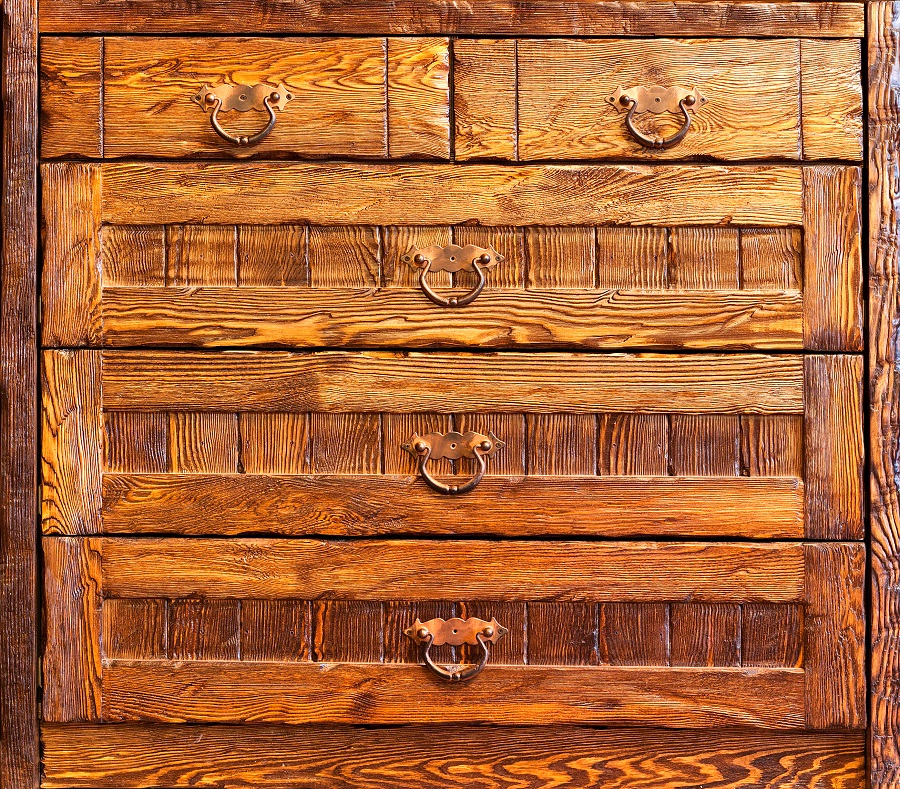
Antique finishes have their rules
Many people appreciate old-looking furniture. There are finishing techniques to achieve this look, called antiquing techniques. They start with wood preparation and continues with glazes, skatesThe new furniture is painted and varnished to achieve a look very similar to decades-old, long-used furniture.
In the magazine there is an article about making an old-look garden tabletop a practical realization. Wood from pallets was used to make it. The antique look is due as much to the special white woodwork as to the patinas and techniques used. Someone commented that they would never leave circular marks on a table, even if it was a garden table. But it is precisely those marks that give the table an authentic old look, even though it was made recently.
If you want the furniture to look authentic, to be credible, you have to take all aspects into account. The table, which was supposed to be a peasant's table, also looked credible because the wood had traces of circular circular marks. A few patinas applied to unprepared wood does not necessarily make it look vintage desired.
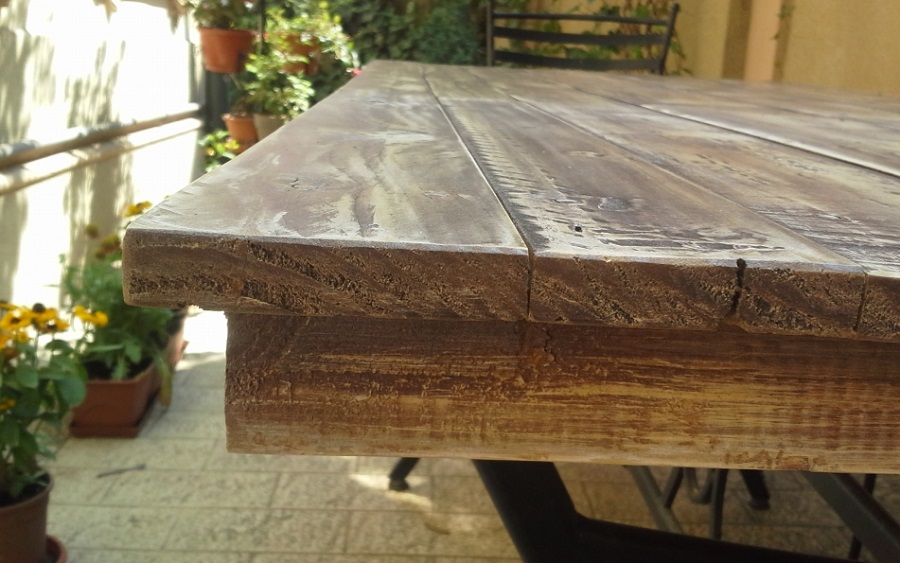
Finishing sells furniture!
I have been contradicted many times when I have said this. I have been told that people were making wooden furniture before the idea of protection and finishing came along. They did, but it is not a question of who was first. It's about not ruining a piece of furniture, painstakingly made from quality wood, with the wrong finish. Because you can see and feel the finish before you can identify the wood used and discover the craftsmanship that went into it. By the time you see the carefully crafted joints, you can see the varnish drips and stains from the finger-jointing and feel the rough look of improper sanding. No matter what the style of the furniture, a poorly done finish will diminish its value.
Try to treat the protection and finish of the furniture you make with the same care as you do woodwork. Use the expertise of those who sell finishing products. Educate yourself, even if information is not easy to find. Be open to specialist advice and recommendations. And if you have any questions or queries, you can leave them in the review, here or in any other article. I will answer you, as always. Good luck!

































Add comment